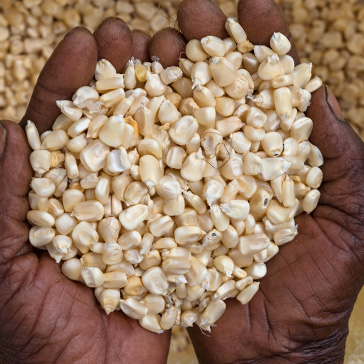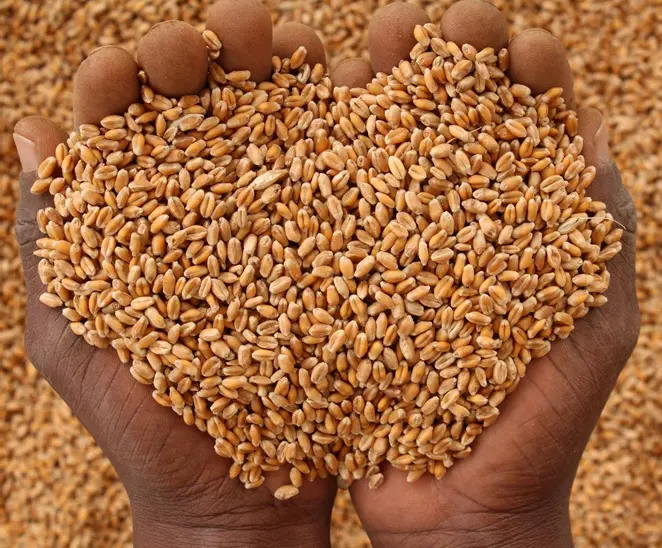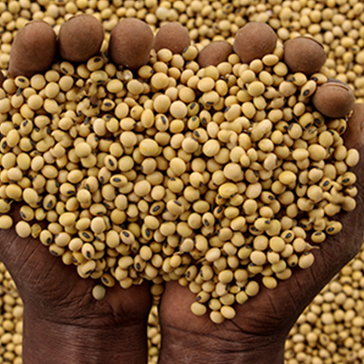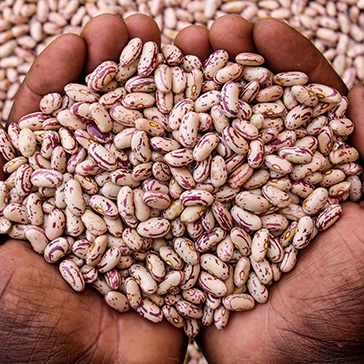Soil conditioning: A step by step guide
Soil pH is an excellent chemical indicator of soil condition (quality and its ability to avail both macro and micronutrients to the crop) on top of other soil structural quality properties. The soil pH also affects microbial activities in the soil which can impact crop growth and yield.
Why is soil sampling and analysis important?
The objectives of soil sampling and analysis are to:
- determine the average nutrient status in a field
- determine pH and recommend soil conditioning
- determine clay content for herbicide application
- determining crop types to be grown and for irrigation purposes
- obtain a measure of nutrient variability in the field.
When the variability is known, fertiliser application can be adjusted to more closely meet the supplemental nutrient needs of a crop for specific field areas. Correct fertiliser nutrient use can result in increased yield, reduced cost, and reduced potential environmental pollution.
It is important to sample soils for analysis after every 3-4 years, depending on soil type.
How to sample soils
The most commonly used procedure for soil sampling would be based on soil type.
Fields are split into sampling blocks that contain similar soils e.g. block A, B, C and so on.
Hillsides are kept separate from bottoms since the soil types will vary greatly.
Soil survey maps, if applicable, can help organise the soil types throughout the sampling area. Samples will not necessarily need to be collected for every soil type; however, similar soils should be kept together.
The zigzag, random, the cross diagonal methods are commonly used and recommended where samples are taken in a zigzag or in a cross diagonal format from a block. This will result in a sample which scientifically represents the whole block.
The sampling block will be dependent on the soils and topography. Generally, a block of 10-20 ha is considered the maximum size.
Smaller sampling blocks may be needed if the soils are quite variable or a production problem is apparent and evident.
Once the sampling block is determined, a sufficient number of sites/cores should be taken to acquire a representative sample. This is generally 10 to 20 sites. The depth of sample for surface soils would be about 20cm or as deep as the primary tillage or specifically as deep as the root zone of intended crop(s). This is also called the tillage layer.
The most commonly used tools for taking samples are augers, probes, hoes or sometimes shovels.
Samples from different sites in a block are then mixed thoroughly and bagged into a khaki pocket and labelled. The samples should be sun dried to remove moisture before being bagged. Information on the labels should include farmer name, farm name, contact details, block name, date taken and intended crop before they are submitted for analysis to approved laboratories.
Example: Random sampling method
When to sample soils?
Winter (just after harvesting a summer crop) is the ideal time for soil sampling except for testing for nitrate-nitrogen in sandy soils.
Winter sampling allows more time to get the results from the testing laboratory and avoids the busy laboratory schedule in spring.
Getting results on time will also allow time for actioning of the recommendations e.g. if lime is to be applied then the best time is 3 – 6 months before crop establishment and concurrently with winter tillage.
Mid or late summer is the appropriate time to collect soil samples for winter wheat.
Phosphorus level in the soil should be determined prior to seeding winter wheat.
Nitrate-nitrogen tests made prior to planting winter wheat help predict nitrogen fertiliser needs for the crop.
It is recommended to take soil samples after 2 to 4 years of land use to determine pH and other soil quality aspects.
What are Acid Soils?
These are soils with a pH measure of less than 7 on a Calcium Chloride Scale in Kenya. These soils contain high levels of active hydrogen and or aluminum in relation to calcium and magnesium levels.
Farmers can correct the quality of acid soils by liming to adjust pH to the levels needed by the crop to be grown.
Soil pH is the measure of the acidity or alkalinity of the soil. The degree of acidity or alkalinity is determined by measuring the concentration of the hydrogen ions in the soil solution. This is expressed in terms of a scale with a range of 0 to 14.
A soil with a pH of 7 is considered neutral while less than 6 is considered acid and a soil with pH greater than 7 is considered alkaline.
What causes soils to be acidic?
Soils may become more acid because of harvested crops removing bases such as calcium and magnesium from the soil. This is a normal and natural process. Different crops remove different amounts of Calcium and Magnesium from the soil.
Rainfall also affects soil pH, whereby water passing through the soil leaches basic nutrients such as Calcium and Magnesium beyond the root zone into drainage water, replacing them with acidic elements such as Hydrogen, Manganese and Aluminum and thereby acidifying the soil.
Application of nitrogen fertilisers e.g. Ammonium Nitrate or Urea and, to a lesser extent, basal fertilisers, contribute to soil acidity by nitrification of ammonium to nitrate through a process which releases hydrogen ions.
Organic matter breaks down naturally in the soil and hydrogen ions are released, which causes an increase in soil acidity. Plants release hydrogen ions to the soil which contributes to the soil acidity.
Why does soil acidity matter to crop productivity?
- Toxicity to crop: as the pH decreases below 5.5, the availability of aluminum and manganese increases and may reach a point of toxicity to the plant.
- Excess aluminium ions in the soil solution interferes with root growth and function, as well as restricting plant uptake of certain nutrients.
- Effect on phosphorus availability: Acid soils cause phosphorus to form insoluble compounds with aluminium and iron. Liming of soils with low pH dissolves these insoluble compounds and allows phosphorus to be more available for plant uptake.
- Micronutrient availability: Acidic soils affect the availability of micronutrients in the soil and ultimately general crop development and productivity.
- Soil organisms: Some microorganisms e.g. important bacteria and fungi in the soil associated with nitrification require a certain soil pH level to function efficiently in acidic soils (low pH).
- Soil physical condition: Liming improve soil physical structure by reducing soil crusting/capping and this promotes better emergence of small seeded crops and ultimately results in better crop stands. Remember, population stand is key in attaining higher yields generally in all crops.
- NPK uptake efficiency can also be affected.
The following table illustrates NPK uptake efficiency vs pH levels: This is critical information
| pH Level | 4.5 | 5.0 | 5.5 | 6.0 | 6.5 | 6.8 |
| Nitrogen | 30% | 43% | 77% | 89% | 100% | 100% |
| Phosphorus | 23% | 31% | 48% | 52% | 100% | 100% |
| Potassium | 33% | 52% | 77% | 100% | 100% | 100% |
| Low pH, low NPK uptake efficiency: Apply lime | |
| Optimum pH for most grain crops, high NPK uptake efficiency |
When is the right time to lime?
Lime should be applied at least 3 to 6 months before crop establishment since it takes a significant amount of time for lime to dissolve and react with the soil to cause the desired adjustments in pH. In other words, a week after harvesting is the best time to apply lime. However, farmers should note that application of lime can still be done even during crop establishment and the lime can act as a ‘buffer’ which works as a conduit for nutrient uptake from soil to crop through the roots and adjust the pH during the later stages of the crop cycle. Frequency of subsequent liming should be determined by soil tests.
Lime placement and incorporation
The most important factor determining the effectiveness of lime is placement and incorporation. Placement for maximum contact with the soil into the root zone of the intended crop/tillage layer is essential and must be achieved.
We generally recommend lime to be evenly incorporated in the 15-25cm zone, as this is a root zone range of most grain crops grown in Kenya e.g. the staple crop – maize. For maximum effectiveness, lime should be uniformly spread and incorporated into and with the soil.
Incorporation can be achieved through discing or harrowing followed concurrently by a roller. In Kenya, liming agents are in powdery formulations to increase surface area for quicker reaction with the soils.
Some liming agents are now coming in sprilled form and these can be easily broadcasted.
Lime can be spread by hand through broadcasting or banding in farrows or incorporating in planting holes in non-mechanised systems. Some smallholder farmers mix lime with a basal fertiliser before application, giving commendable results. However, farmers should always adhere to the recommended lime quantities.
In mechanised farms, a lime spreader or lime box can be used – which normally gives the best results.
A lime box should always be operated when at least half full to full to ensure uniform application of lime.
What amounts of lime can one apply?
We recommend for farmers to follow soil analysis recommendations concerning amounts and type of lime to be applied. The amount is depended on the acidity levels of the soil and differs from one soil type to another. However, the following general recommendation can be useful and is dependent on the soil type. Amount of lime required to raise soil pH by 0.1 units for different soil types-a gentle guide:
| Soil type | Lime rates to raise by 0.1 pH units |
| Sandy soils | 100-120kg/0.1 pH units |
| Sandy Loamy soils | 120-150kg/0.1 pH units |
| Clay soils | 150-200kg/0.1 pH units |
General interpretation: it means a farmer with a sandy soil requires 1000kg (1 tone) of lime to raise his pH from 4.5 (acidic) to 5.5 (optimum for maize and most food/cash crops).
What is maintenance liming?
The use of Nitrogen containing fertilisers increases soil acidity levels. We therefore generally recommend that whenever any form of Nitrogen, be it from basal (compound D, L, S or J, blends and high analysis blends etc.) OR top dressing (e.g. AN/Urea) is applied, a farmer needs a maintenance lime application of about 1.8kg for every 1kg of Nitrogen applied. This is applicable if one does not carry out a soil analysis before the next crop and is based on nutrient removal by the previous crop. However, the top recommendation is to sample your soils for analysis to determine lime rates and agents at least every 3 or 4 years of soil use.
What are the liming agents available in Kenya?
In Kenya, we basically have two liming agents i.e. Dolomitic Lime (Magnesium Carbonate) which is ideal for adjusting pH in magnesium deficient soils.
The other agent available in Kenya is Calcitic Lime (Calcium Carbonate), which is suited for adjusting pH in calcium deficient soils.
It is important to sample your soils for analysis to determine pH and the liming agent to be used. We strongly discourage farmers to blindly apply lime without qualification of the liming agent from soil analysis results. This can have detrimental effects to the soil and crop productivity. It can result in preferential uptake instead of a balanced uptake of bases.
Preferential uptake is when a certain nutrient is taken up at the expense of the other or a balanced uptake due to concentration differences. A good example is when Calcitic lime is applied (blindly) instead of Dolomitic lime- this will cause an increased uptake of Calcium at the expense of a balanced uptake of other elements e.g. Magnesium, and therefore a crop will show magnesium deficiencies yield will be affected.
Lime vs Gypsum
- Lime (Calcium Carbonate/ Magnesium Carbonate) adjusts soil pH and at the same time supplies the soil with either Calcium or Magnesium and Carbon, depending on the liming agent used.
- Lime ‘sweetens’ acidic soils and improves Fertiliser Use Efficiency (FUE).
- On the other hand, Gypsum (Calcium Sulphate) is a supplementary source of Calcium and Sulphur, which farmers apply whenever there is deficiency of these two elements in the soil.
- It should be noted that Gypsum does not adjust soil pH but rather supplement the soil with Calcium and Sulphur.
- Gypsum also improves the soil’s physical structure i.e. removes hard setting clodiness, removes surface crusting/capping and improves soil workability.
What are the benefits of liming?
- Liming generally improves soil structure and nutrient availability in the soil and ultimately crop productivity.
- Liming also provides some plant nutrients such as Calcium or Magnesium and Carbon. The favourite term for these is ‘complimentary benefits’.
- Liming improves Fertiliser Use Efficiency (FUE) of crops. Use of fertiliser alone without lime results in poor fertiliser uptake and reduces the economic benefit of using fertilisers.
- Lime reduces availability of toxic elements in the soil such as aluminum and manganese. This results in improved root development and ultimately nutrient uptake.
- Liming improves the soil physical structure, resulting in good crop emergence and stand, greater root proliferation and an improved nutrient uptake.
- Liming acid soils improves the environment for beneficial soil microorganisms. In simpler terms, liming acidic soils to optimal levels creates a conducive environment for microorganisms to carry out necessary processes in the soil e.g. nitrification. A good example we always mention to farmers is of a soyabean crop. For the rhizobium (inoculant) to function properly in nitrogen fixation, there must be a conducive pH range of 5.2 to 6. That is the reason why soyabean and most other legumes and food crops are sensitive to low soil pH.
- Liming promotes a more rapid breakdown of organic materials in the soil, releasing nutrients to growing plants. Liming improves the palatability of forages.
- Pre-emergence herbicides efficacy can be affected if soils are acidic, hence liming acidic soils will enhance pre-emergence herbicide efficacy.
+263 772 413 184/john.basera@seedcogroup.com
Author: John Basera-Seed Co Agronomy and Extension Services Manager

 Zambia
Zambia Zimbabwe
Zimbabwe Malawi
Malawi


